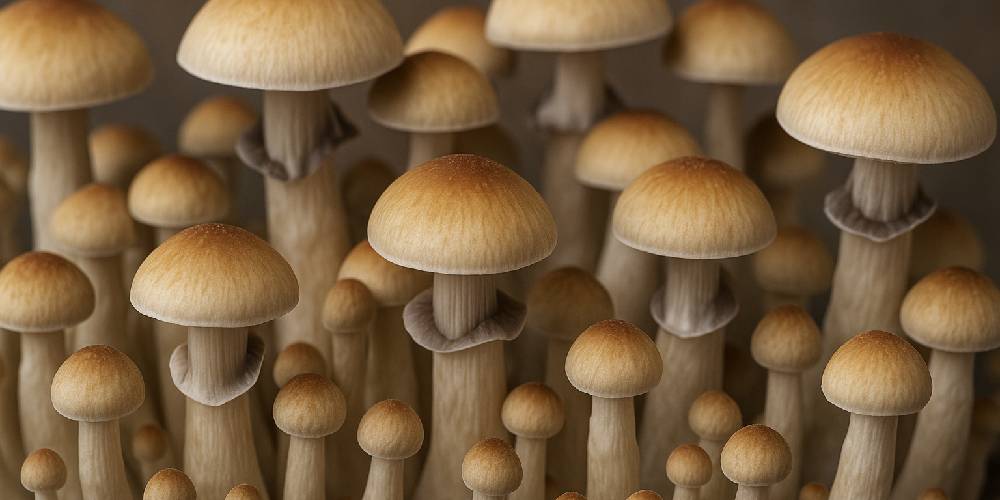
Hillbilly Mushrooms: A Deep Dive into This Unique Psilocybin Strain
Share
If you’ve ever found yourself digging through the ever-growing catalog of psilocybin mushroom strains, chances are you’ve come across the name “Hillbilly mushrooms.” It’s an unusual name for a strain with such a fascinating backstory and a set of characteristics that sets it apart from the more mainstream varieties. Hillbilly mushrooms have steadily carved out a reputation in the world of mushroom enthusiasts, not only for their quirky name but for their reliability, unique cultivation profile, and genetic resilience.
In this blog, we’ll take a closer look at what makes Hillbilly mushrooms special—from their origins and how they’ve evolved to how cultivators handle their spores. Whether you’re a beginner exploring psilocybin mushroom spores for the first time or someone with a few research under your belt, this deep dive into Hillbilly mushrooms might just lead you to your next favorite strain.
Where Did Hillbilly Mushrooms Come From?
The name might make you think they originated from deep in the Appalachian backwoods—and you wouldn’t be far off. Hillbilly mushrooms are widely believed to have been first discovered in Arkansas, a state with the kind of humid, warm climate that wild psilocybin mushrooms thrive in. This strain was collected in natural conditions, far from commercial labs or researcher, which gives it that rugged, earthy reputation.
Unlike other strains that may have gone through generations of indoor refinement, Hillbilly mushrooms are known for their natural vigor. They’re not overbred or altered to achieve hyper-specific traits. Instead, they reflect the wild nature of the environment they came from—adaptable, sturdy, and reliable in varied conditions.
That origin story also plays a big part in how cultivators perceive Hillbilly mushrooms. There's an appeal in knowing that what you’re working with comes straight from nature with minimal interference. And yet, despite their backcountry roots, Hillbilly mushrooms have gained respect in the mycology community for how well they perform in controlled environments.

Hillbilly Mushrooms from Spores
One of the biggest reasons Hillbilly mushrooms remain popular is because they’re relatively easy to cultivate. Psilocybin mushroom spores from this strain tend to be forgiving, which is a huge plus for beginners who are just learning how to handle agar, inoculation, or substrate prep.
These spores often demonstrate rapid colonization. When compared to more temperamental strains, Hillbilly mushrooms are less likely to stall or contaminate under average home-lab conditions. This alone makes them a go-to for people just starting their journey into cultivating psilocybin mushroom spores.
The fruiting bodies—meaning the actual mushrooms that are made—are typically medium to large in size. You’ll often see thick, sturdy stems and pale, almost ivory caps that flatten out as they mature. Their mycelium spreads aggressively, filling out substrates quickly and offering high yields with minimal drama. In short, they don't make you work too hard for a satisfying research.
More advanced cultivators also find value in Hillbilly mushrooms because they’re responsive to bulk methods like monotubs and casing layers. Whether it’s a small personal setup or a larger operation, this strain plays well across the board.
Visual Appearance and Physical Traits
When it comes to aesthetics, Hillbilly mushroom spores don’t scream for attention like some of the more exotic strains do. You won’t find flashy blues or unusually shaped caps here. Instead, they look natural—earthy, classic, and a little rugged. Think thick white stems with slightly bulbous bases and wide, cream-to-light-caramel caps.
These mushrooms are known to turn into clusters, often producing flushes that have uniform shape and size. Cultivators who favor symmetry and predictability in their harvests appreciate this quality, especially when comparing them to strains that produce irregular, mutation-prone fruits.
Another thing worth noting is that Hillbilly mushrooms tend to hold their structure well post-harvest. They don’t shrivel dramatically when dried, and their caps usually retain a bit of their shape. This helps with storage and makes them easier to handle for spore printing or microscopic study.
A Strain with a Balanced Profile
While we’re steering clear of health-related effects or subjective experiences, it’s still fair to say that Hillbilly mushrooms have built a reputation among seasoned enthusiasts as a “balanced” strain. The way people describe their interactions with this variety suggests a middle-of-the-road profile—nothing too overwhelming, but nothing weak or forgettable either.
That kind of feedback often leads cultivators to recommend Hillbilly mushrooms to first-timers who want to explore beyond the standard Golden Teacher or B+ varieties. With Hillbilly, you’re getting something that feels tried-and-true, but without the oversaturation that more popular strains sometimes carry.
It’s also common to hear Hillbilly mushrooms compared to their more high-performance cousins, with comments on how they strike a fine balance between yield, hardiness, and aesthetics. It's not the flashiest strain on the block, but it's one that tends to win people over through consistency and character.
Why Psilocybin Mushroom Spores Matter
One of the great things about working with psilocybin mushroom spores—especially when dealing with strains like Hillbilly—is that they offer a way to engage with fungal biology without the need to fruit the mushrooms themselves. Spore prints and syringes can be studied under a microscope to understand morphology, spore dispersal, and genetic variation between strains.
This is particularly appealing to mycology hobbyists and researchers. For them, Hillbilly mushroom spores offer a clean and stable genetic structure that’s easy to work with. The spores typically show strong viability, which helps reduce waste and ensures a smoother research or cultivation process.
In fact, a lot of the appeal behind psilocybin mushroom spores in general comes down to the diversity they represent. Each strain—from the famously potent Penis Envy to the beginner-friendly Golden Teacher—brings something different to the table. Hillbilly mushrooms occupy a niche within that ecosystem where strength, ease-of-use, and natural genetics all intersect.
Community Insights and Real Experiences
Scroll through forums or online mycology groups, and you’ll see a consistent theme when Hillbilly mushrooms come up—people love the simplicity. There's something almost nostalgic about the way users describe researching this strain. It's not uncommon to read stories of someone having their first successful monotub with Hillbilly spores or how they returned to this strain after trying more complicated ones.
One user noted how their Hillbilly strain outperformed their Cambodian and Albino A+ strains, despite using the same substrate and conditions. Another shared how they were surprised by the resilience of the mycelium even after some temperature fluctuations during colonization. That kind of anecdotal praise goes a long way in the mycology community, where hands-on experience often outweighs theory.
People also mention the uniformity of flushes and how easy it is to take spore prints from Hillbilly caps. This makes the strain a top choice for those interested in preserving and sharing spores with others.

Hillbilly Mushrooms vs. Other Popular Strains
When comparing Hillbilly mushrooms to other strains, it’s helpful to look at them as a bridge between beginner and intermediate levels. Strains like Golden Teacher are known for being forgiving, while something like Penis Envy Spores requires more finesse and patience. Hillbilly mushrooms land somewhere in the middle—they’re simple enough for new researchers but interesting enough to keep experienced cultivators engaged.
Another notable comparison is with B+, a strain famous for its size and user-friendliness. While B+ might win on sheer visual impact, Hillbilly mushrooms tend to be a bit more consistent in their progression cycle and colonization speed. Many cultivators who get frustrated with B+ mutants or spotty colonization end up switching over to Hillbilly and staying there.
It’s also worth noting that Hillbilly mushrooms don’t usually suffer from the same environmental sensitivities that some other strains do. That means fewer failed studies and more room for experimentation—perfect for anyone looking to dial in their setup without risking the entire batch.
The Bottom Line
At the end of the day, Hillbilly mushrooms are more than just a quirky name slapped on a spore syringe. They’re a reliable, naturally sourced strain with a strong track record in the cultivation world. Whether you're a beginner looking for a forgiving product or a seasoned cultivator who appreciates strong genetics and consistency, Hillbilly mushrooms offer a satisfying and low-maintenance experience.
Their history, rugged character, and ease of cultivation all contribute to their growing reputation. And while they may not be the flashiest strain around, they certainly hold their own when it comes to performance, spore quality, and cultivation outcomes.
So if you're considering diving into the world of psilocybin mushroom spores—or if you're simply looking to switch things up from your usual experience—Hillbilly mushrooms might just be the underrated gem you've been looking for. Sometimes, the best things come from off the beaten path.
